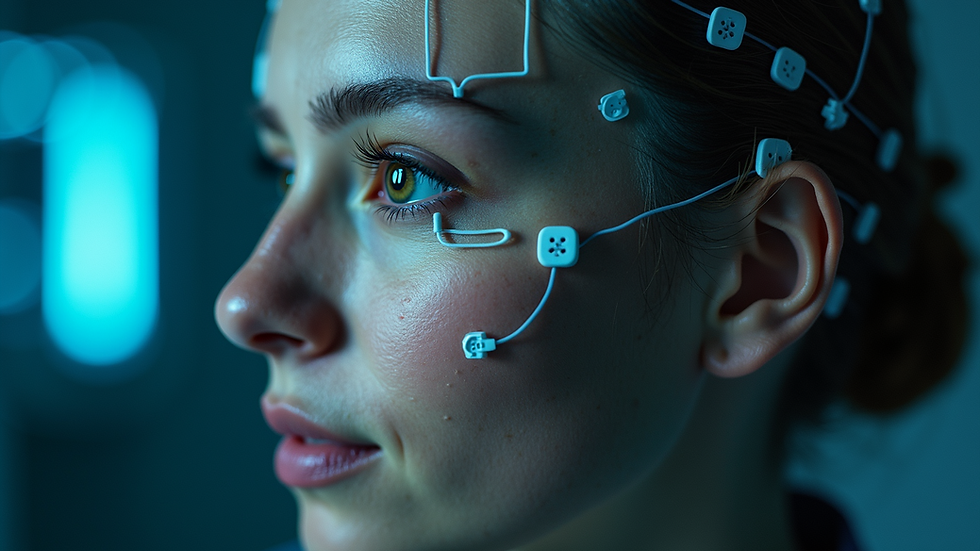Innovative Neurodiagnostic Testing for Comprehensive Diagnosis
- Samantha Schmer
- Jul 7
- 4 min read
In today's fast-paced world, understanding the brain and its functions is more important than ever. Neurodiagnostic testing has evolved significantly, offering innovative methods to diagnose various neurological conditions. These advancements not only enhance the accuracy of diagnoses but also improve patient outcomes.
This blog post will explore the latest innovations in neurodiagnostic testing, their benefits, and how they contribute to comprehensive diagnosis.
What is Neurodiagnostic Testing?
Neurodiagnostic testing refers to a range of procedures used to assess the nervous system's function. This includes the brain, spinal cord, and peripheral nerves. These tests help identify conditions such as epilepsy, sleep disorders, and neurodegenerative diseases.
Common neurodiagnostic tests include:
Electroencephalogram (EEG): Measures electrical activity in the brain.
Magnetic Resonance Imaging (MRI): Provides detailed images of brain structures.
Computed Tomography (CT) Scan: Offers cross-sectional images of the brain.
Electromyography (EMG): Evaluates the health of muscles and the nerve cells that control them.
Each of these tests plays a crucial role in diagnosing neurological disorders.
The Role of Technology in Neurodiagnostic Testing
Technology has transformed neurodiagnostic testing. Advanced imaging techniques and software have made it possible to obtain clearer images and more accurate data.
For instance, functional MRI (fMRI) allows doctors to see brain activity in real-time. This is particularly useful for understanding how different areas of the brain work together.
Additionally, machine learning algorithms are being used to analyze EEG data. These algorithms can detect patterns that may be missed by the human eye. This leads to quicker and more accurate diagnoses.
Innovative Techniques in Neurodiagnostic Testing
1. High-Density EEG
High-density EEG is an advanced form of traditional EEG. It uses a greater number of electrodes to capture more detailed brain activity. This technique provides a clearer picture of brain function, especially in patients with epilepsy.
By using high-density EEG, doctors can pinpoint the exact location of seizures. This information is vital for planning surgical interventions.
2. Magnetoencephalography (MEG)
Magnetoencephalography is another innovative technique. It measures the magnetic fields produced by neural activity. This non-invasive method provides real-time data on brain function.
MEG is particularly useful for mapping brain activity before surgery. It helps surgeons avoid critical areas of the brain that control essential functions.
3. Neuroimaging Biomarkers
Neuroimaging biomarkers are becoming increasingly important in diagnosing neurodegenerative diseases. These biomarkers can indicate the presence of conditions like Alzheimer's disease long before symptoms appear.
For example, PET scans can detect amyloid plaques in the brain, which are associated with Alzheimer's. Early detection allows for timely intervention and better management of the disease.
Benefits of Innovative Neurodiagnostic Testing
The advancements in neurodiagnostic testing offer numerous benefits:
Increased Accuracy: New technologies provide more precise data, leading to better diagnoses.
Early Detection: Innovative techniques can identify conditions earlier, allowing for timely treatment.
Personalized Treatment Plans: With detailed information, doctors can create tailored treatment plans for each patient.
Improved Patient Outcomes: Early and accurate diagnoses lead to better management of neurological conditions, improving patients' quality of life.
Challenges in Neurodiagnostic Testing
Despite the advancements, challenges remain in neurodiagnostic testing.
1. Accessibility
Not all patients have access to the latest technologies. Some facilities may lack the resources to offer advanced testing. This can lead to disparities in care.
2. Cost
Innovative neurodiagnostic tests can be expensive. Insurance coverage may not always include these advanced procedures, making them less accessible for some patients.
3. Interpretation of Results
As tests become more complex, interpreting the results can be challenging. Healthcare professionals must stay updated on the latest advancements to provide accurate diagnoses.
The Future of Neurodiagnostic Testing
The future of neurodiagnostic testing looks promising. Ongoing research and development are likely to lead to even more innovative techniques.
1. Artificial Intelligence
Artificial intelligence (AI) is set to revolutionize neurodiagnostic testing. AI algorithms can analyze vast amounts of data quickly and accurately. This will enhance the diagnostic process and improve patient care.
2. Wearable Technology
Wearable devices that monitor brain activity are on the horizon. These devices could provide continuous data, allowing for real-time monitoring of neurological conditions.
3. Telemedicine
Telemedicine is becoming increasingly popular, especially in neurodiagnostics. Remote consultations and monitoring can improve access to care for patients in rural areas.
Real-World Applications of Innovative Neurodiagnostic Testing
Innovative neurodiagnostic testing is already making a difference in real-world scenarios.
Case Study: Epilepsy Management
A patient with epilepsy underwent high-density EEG testing. The detailed data allowed doctors to identify the precise location of the seizures. As a result, the patient was able to undergo successful surgery, significantly reducing seizure frequency.
Case Study: Early Alzheimer's Detection
In another case, a patient showed early signs of cognitive decline. A PET scan revealed the presence of amyloid plaques, indicating early Alzheimer's disease. The patient was able to start treatment early, which helped manage symptoms effectively.
Conclusion: Embracing the Future of Neurodiagnostic Testing
Innovative neurodiagnostic testing is changing the landscape of neurological care. With advancements in technology and techniques, patients can receive more accurate diagnoses and better treatment options.
As we continue to embrace these innovations, the future of neurodiagnostic testing looks bright. By improving access and understanding, we can ensure that everyone receives the care they need.



Comments